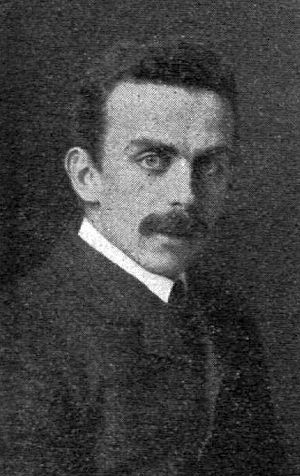Volkmar Andreae facts for kids
Volkmar Andreae (born July 5, 1879 – died June 18, 1962) was a talented Swiss musician. He was famous as a conductor, who leads orchestras, and also as a composer, who writes music.
Contents
Life and Career
Volkmar Andreae was born in Bern, Switzerland. He started learning to play the piano when he was a child. He also had his first lessons in composing music with Karl Munzinger.
From 1897 to 1900, he studied at the Cologne Conservatory. Here, he learned from important teachers like Fritz Brun and Franz Wüllner. In 1900, he worked as a soloist tutor at the Munich Hofoper, which is an opera house.
In 1902, Andreae became the leader of the Mixed Choir of Zurich. He stayed with this choir until 1949. He also led the Stadtsängerverein Winterthur from 1902 to 1914 and the Männerchor Zürich from 1904 to 1914.
From 1906 to 1949, he was the main conductor for the Tonhalle-Orchester Zürich. He also led the Conservatory of Zurich from 1914 to 1939. In 1911, he was offered a very big job: to become the conductor of the New York Philharmonic Orchestra, taking over from the famous Gustav Mahler. However, Volkmar Andreae decided not to take the job.
Later in his life, he worked as a composer in Vienna. He also traveled internationally to conduct music, especially the works of Anton Bruckner. Volkmar Andreae wrote many different kinds of music. He composed operas, symphonies, and chamber music. He also wrote concertos for piano, violin, and oboe, as well as piano music, choir music, and songs. He passed away in Zurich.
Volkmar Andreae is even mentioned in a famous book! In Chapter XXI of Thomas Mann's novel Doctor Faustus, he is shown conducting a fictional concert. This concert, featuring music by a made-up composer named Adrian Leverkühn, was said to have happened in 1922 at the Tonhalle in Zurich.
His grandson, Marc Andreae, is also a conductor. Marc has recorded some of his grandfather's musical pieces.
Works (selection)
Here are some of the musical pieces Volkmar Andreae created:
Operas
- Ratcliff, opera (1914)
- Abenteuer des Casanova, opera (1924)
Orchestra
- Symphony in B flat major (unpublished)
- Symphony No. 1 in F major (1900)
- Symphony No. 2 in C major, Op. 31 (1920)
- Sinfonische Fantasie, Op. 7
- Kleine Suite, Op. 27
- Notturno und Scherzo, Op. 30 (1919)
- Music for Orchestra, Op. 35 (1921)
- Li-Tai-Pe, Eight Chinese songs for tenor and orchestra, Op. 37
- La cité sur la montagne, festival music (1942)
Concertante works
These are pieces for a solo instrument with an orchestra.
- Piano Concerto in D (1898)
- Konzertstück in B minor for piano and orchestra (1900)
- Rhapsody for violin and orchestra, Op. 32 (1920)
- Violin concerto, Op. 40 (1935)
- Concertino for Oboe and Orchestra, Op. 42
- Li-Tai-Pe, Eight Chinese songs for tenor and orchestra (1931) – inspired by the ancient Chinese poet Li Bai
Choral works
These are pieces written for choirs to sing.
- Vater unser for mezzo-soprano, women's choir and organ
- Das Göttliche for tenor, choir and orchestra (1900)
- Charons Nachen for soloists, choir, and orchestra (1901)
- Schutzgeister, cantata (1904)
Chamber music
These are pieces for a small group of instruments.
- Piano Trio No. 1 in F minor, Op. 1
- Violin Sonata in D major, Op. 4
- String Quartet No. 1 in B-flat major, Op. 9
- Piano Trio No. 2 in E-flat major, Op. 14
- Six piano pieces for two hands, Op. 20
- String Trio in D minor, Op. 29
- Notturno and Scherzo, Op. 30
- String Quartet No. 2, Op. 33
- Quartet for Flute, Violin, Viola and Violoncello, Op. 43
See also
 In Spanish: Volkmar Andreae para niños
In Spanish: Volkmar Andreae para niños


